Top image: Nicole Lam / RICE Media
‘Mould-gate’ began as things always do in Singapore: With an incensed Facebook post sparking the wildfires of an online furore.
The post in question was written by one exasperated Jane Chai, living at Anchorvale Parkview in Sengkang. In it, she detailed the unsightly facade of her Housing & Development Board (HDB) block, likening her place to a “haunted house”.
Her complaint comes complete with pictures capturing every ugly spore that found its way onto window ledges, sprawling across the walls of her block and creeping into seemingly every crevice of her Build-to-Order (BTO) block.
And while some wear and tear on any public structures are forgivable, the BTO flats in question only recently reached their Minimum Occupancy Period (MOP) just last year. Yet, in Jane’s words, they’re looking very much worse than 30-year-old HDB blocks.
The housing market has always been a lightning rod for heated discussions (especially now), and this was no different. Reactions to Jane’s post expressed shock and anger that such a new building could have quickly devolved into something from The Last of Us.
It didn’t take long for the post to get coverage by local publications and prompted a response by Member of Parliament (MP) Jamus Lim. HDB has since commissioned a study to look into the mould situation of Sengkang and Punggol flats.
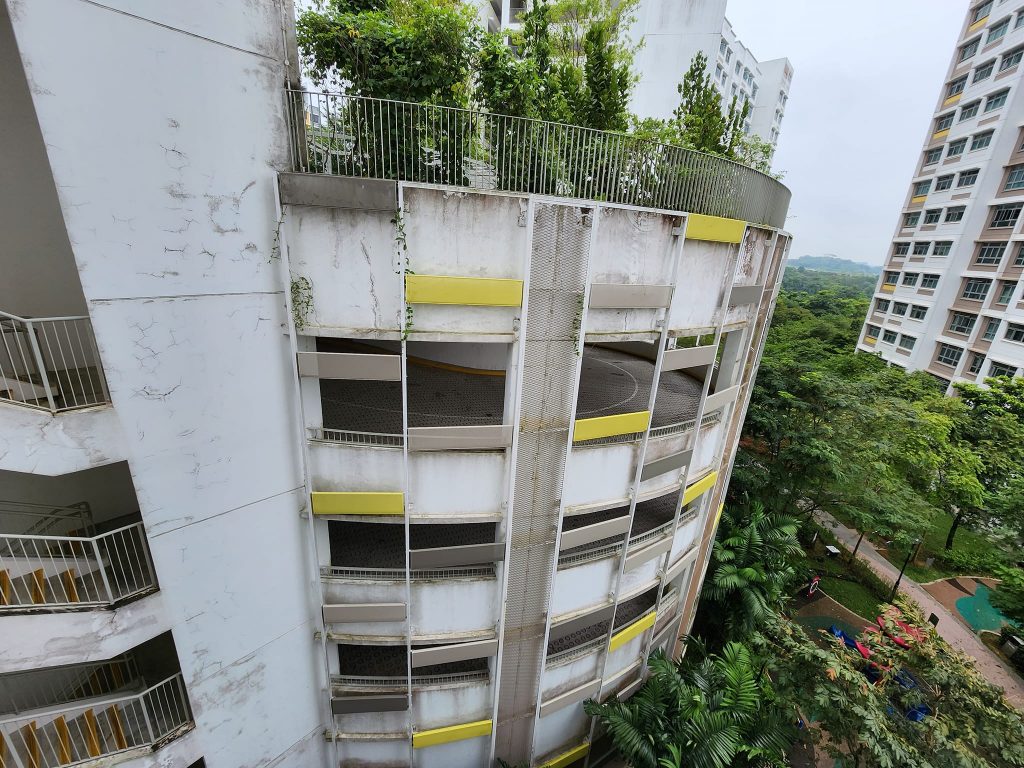
Too Early to Mould
As expected, Sengkang Town Council acted swiftly after the uproar online.
The mouldy areas at the foot of Jane’s flat were cleaned; repair and rejuvenation works were scheduled for a much earlier date as opposed to the one originally planned for two years later.
Still, even as this HDB block found its clean, happy ending, it shines a spotlight on the external longevity and ongoing maintenance of newer BTO estates.
A quick scroll through the comments of Jane’s Facebook post tells us that mould is an oft-sighted occurrence in newer BTO estates.
When it comes to mould, it is a simple case of getting respective town councils to clean up the offending spores and be done with it. The complication, however, lies in how new these buildings are (most have just MOPed) and how quickly they succumb to the hot and humid climate.
Even as some of the residents of these estates have had varying degrees of success with getting rid of the mould, the emotional toll of living in a poorly maintained estate has left an indelible mark on them.
Amidst skyrocketing rentals, climbing costs of resale flats, and constantly oversubscribed BTO flats, the mould feels like another thorn in the scruffy garden of Singapore’s real estate market.
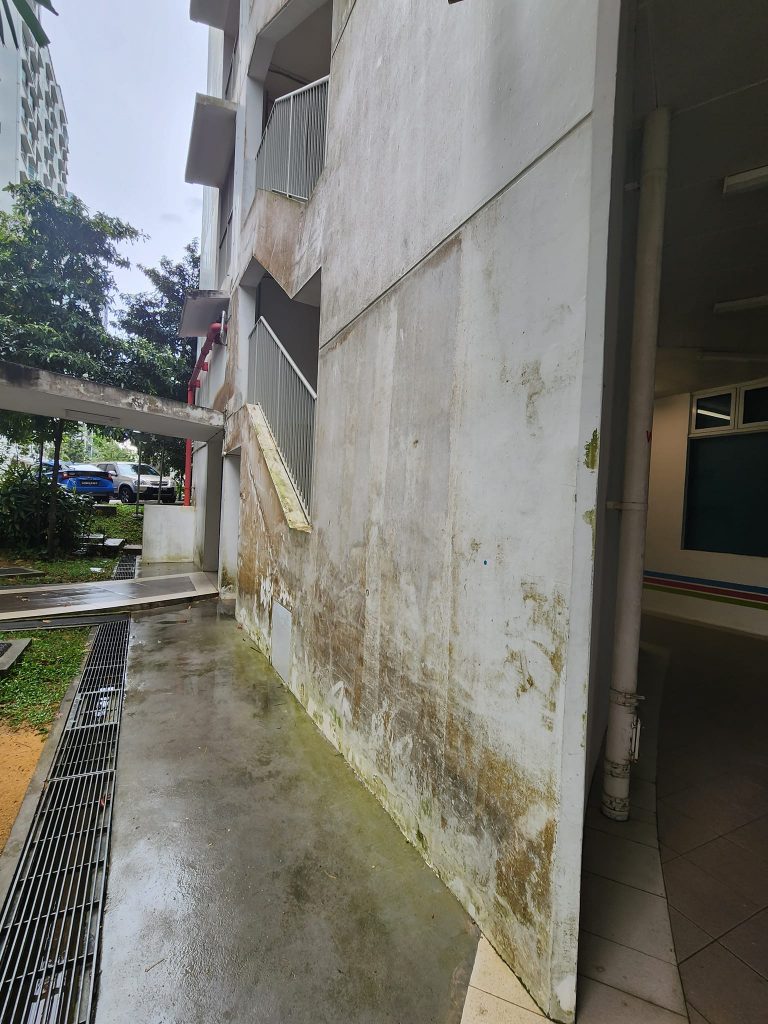
When New Chapters Turn Mouldy
There is nothing like the joy of getting your first home—a place to call your own and your shots.
Getting to live in a new estate where everything starts with a clean slate seems like the ultimate cherry on top. At least, that’s what James, in his late 30s, thought when he moved into his unit at Waterway Ridge in November of 2015, the same year it was completed.
“Of course, in the beginning, the building was brand new and always very clean and neat,” he recalls. “Over the years, conditions start to deteriorate; the trees are not well pruned, the beams are peeling, and floors are not very clean.”
“I have to say the walkway is kind of disgusting. When I walk down, you can see the top part is all blackish colour,” describes James.
When the damning photos of Anchorvale Parkview hit the internet, James felt a strange solidarity. He and his seven-year-old housing estate weren’t alone.
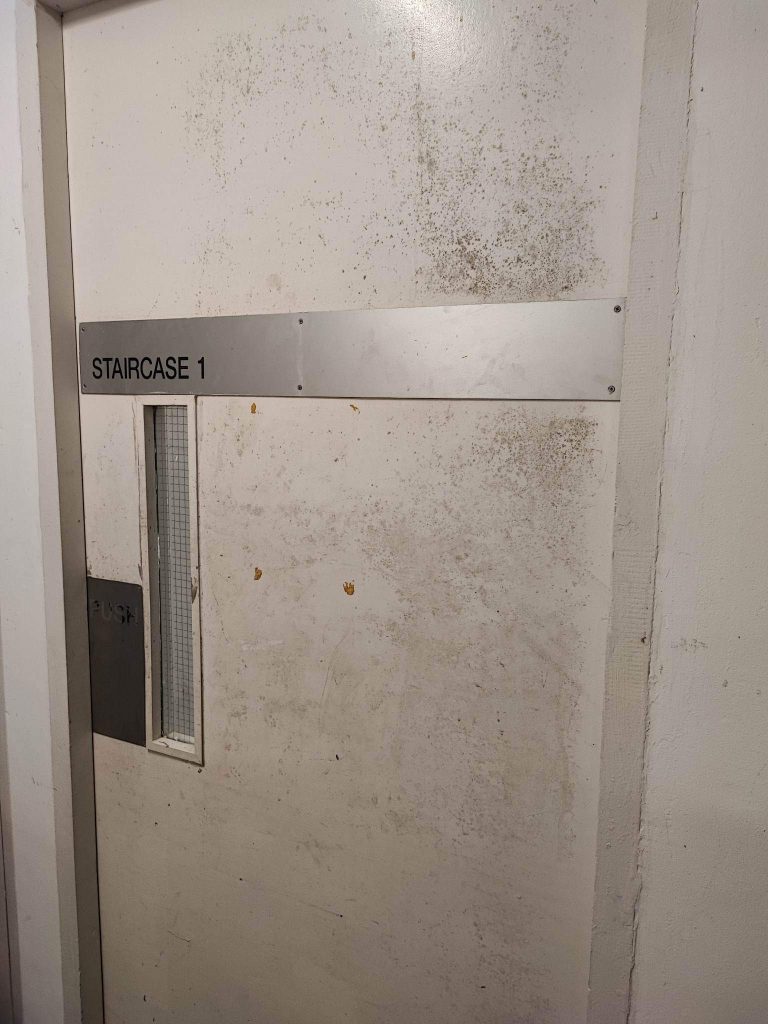
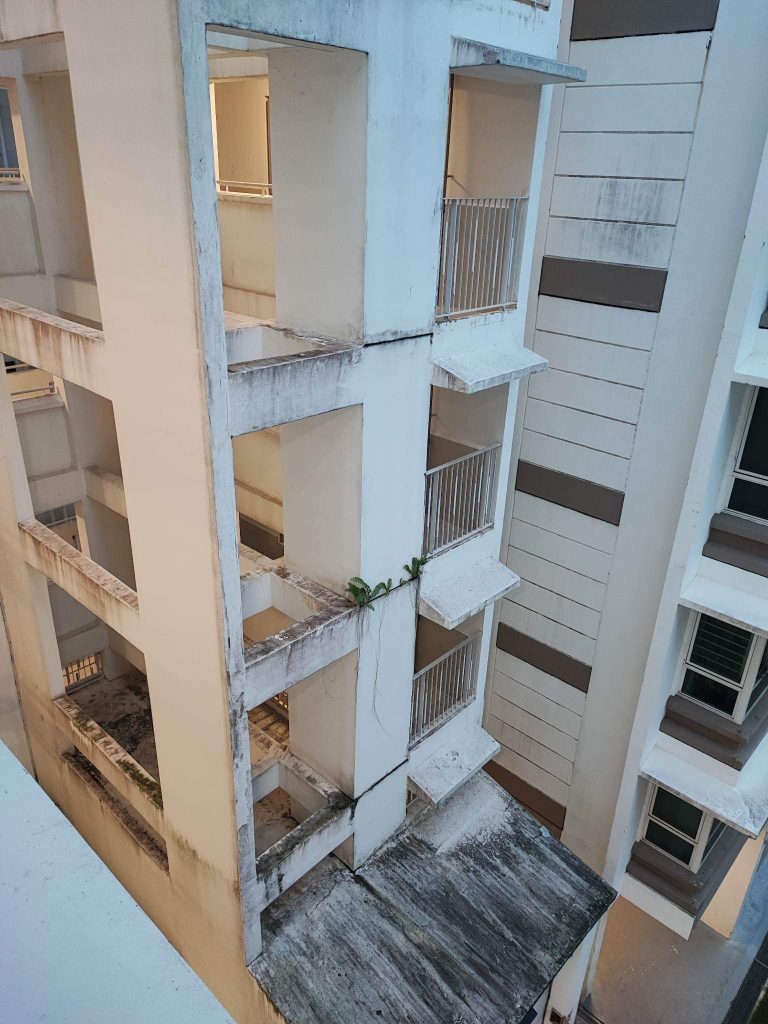
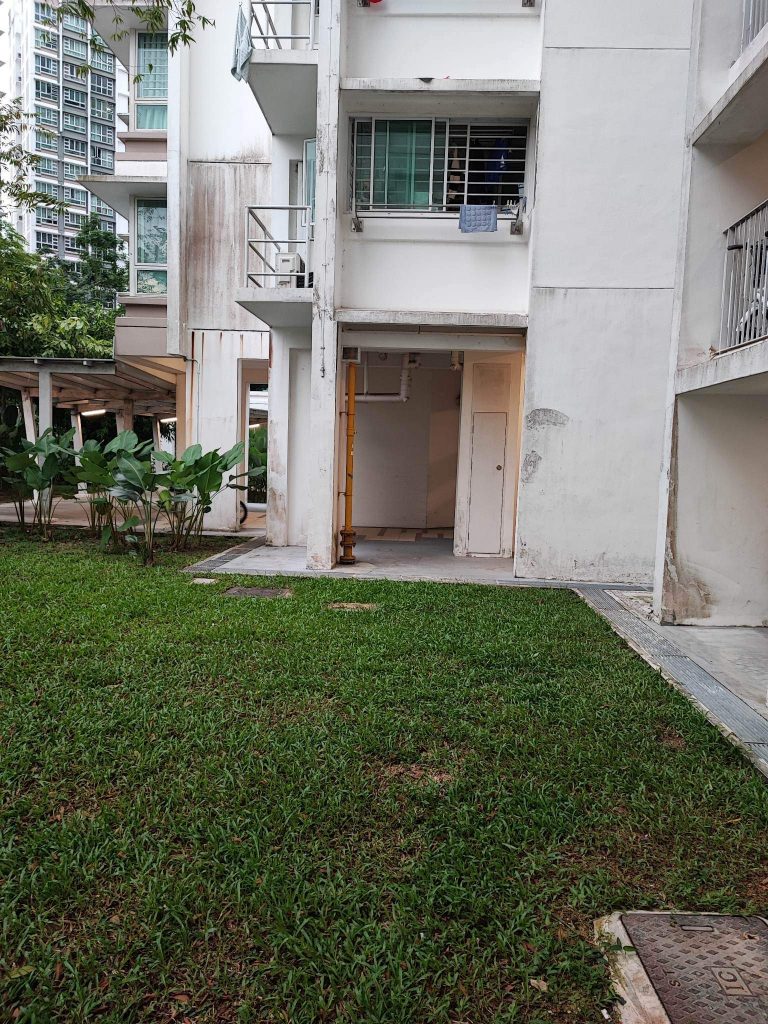
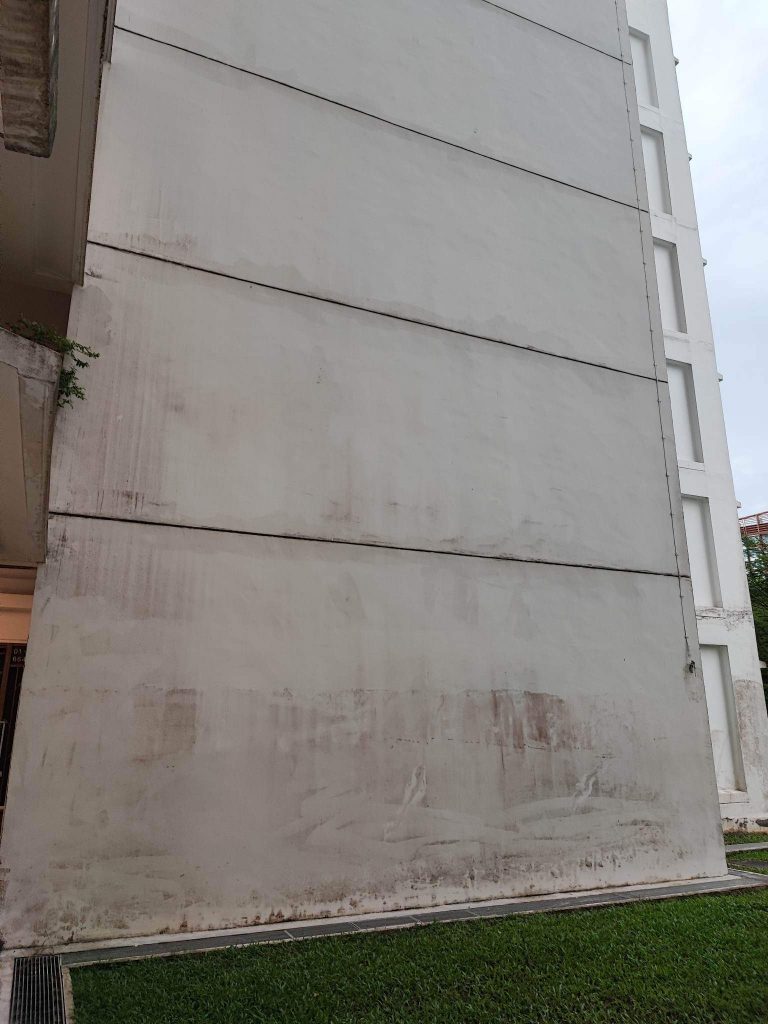
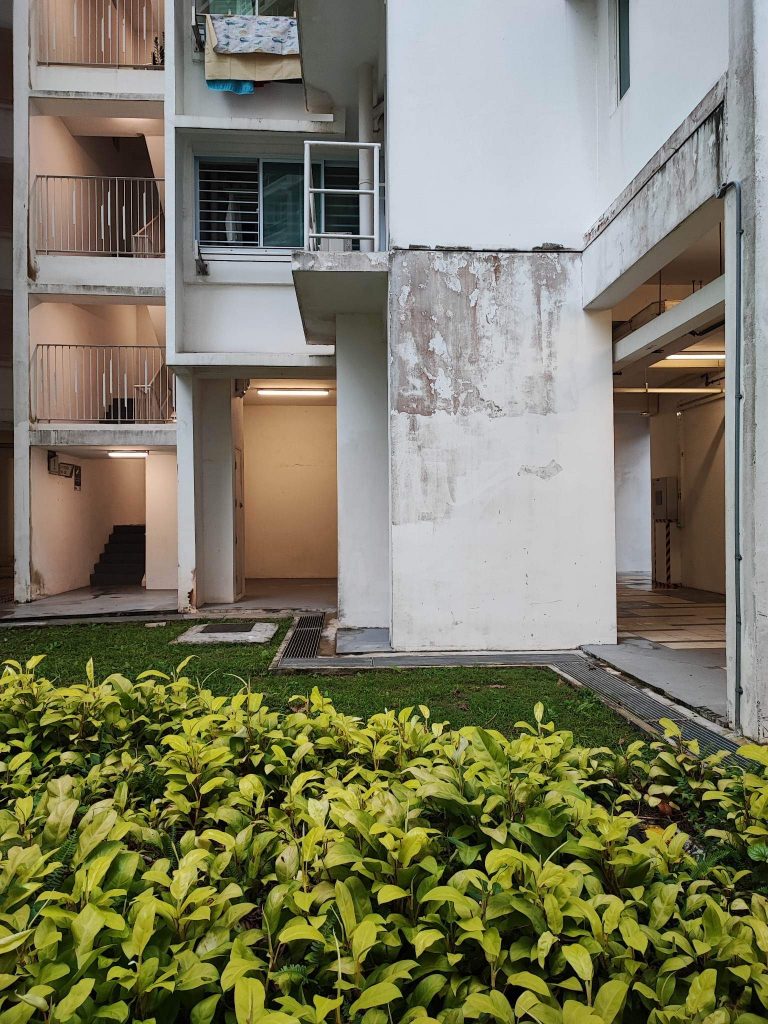
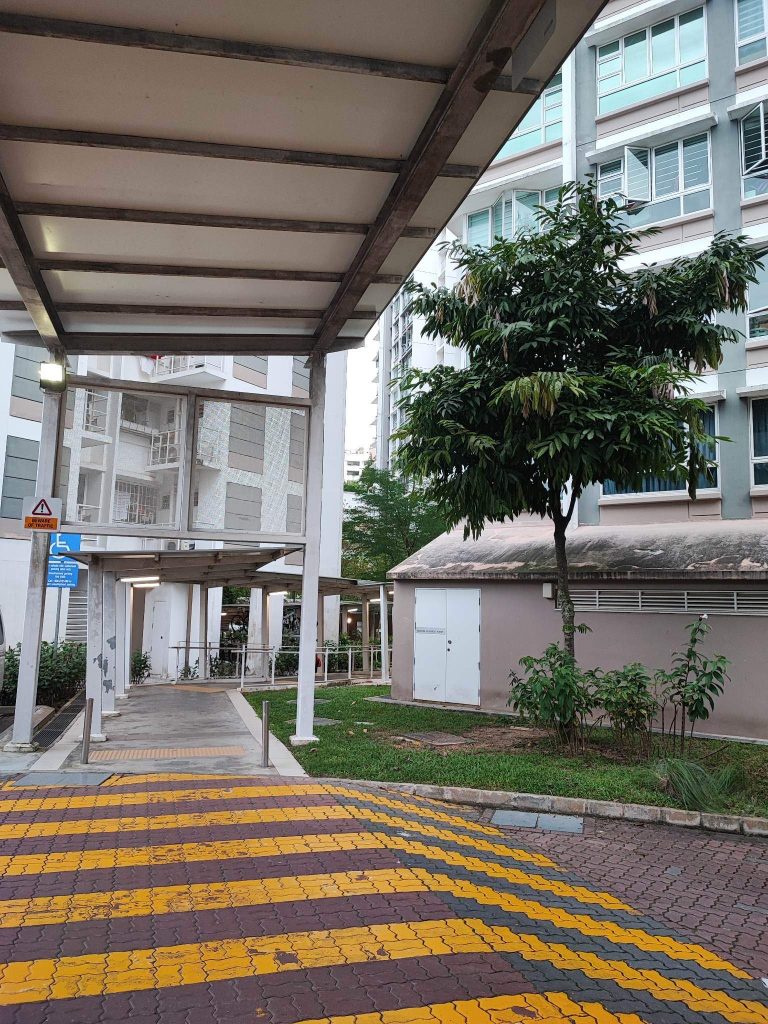
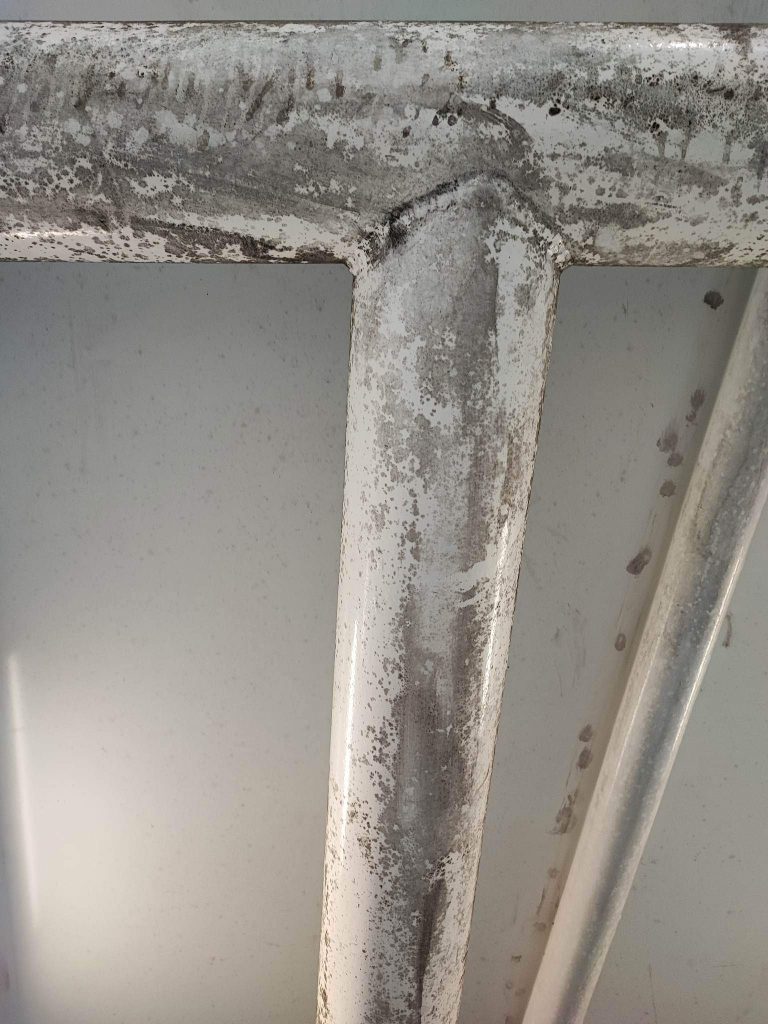
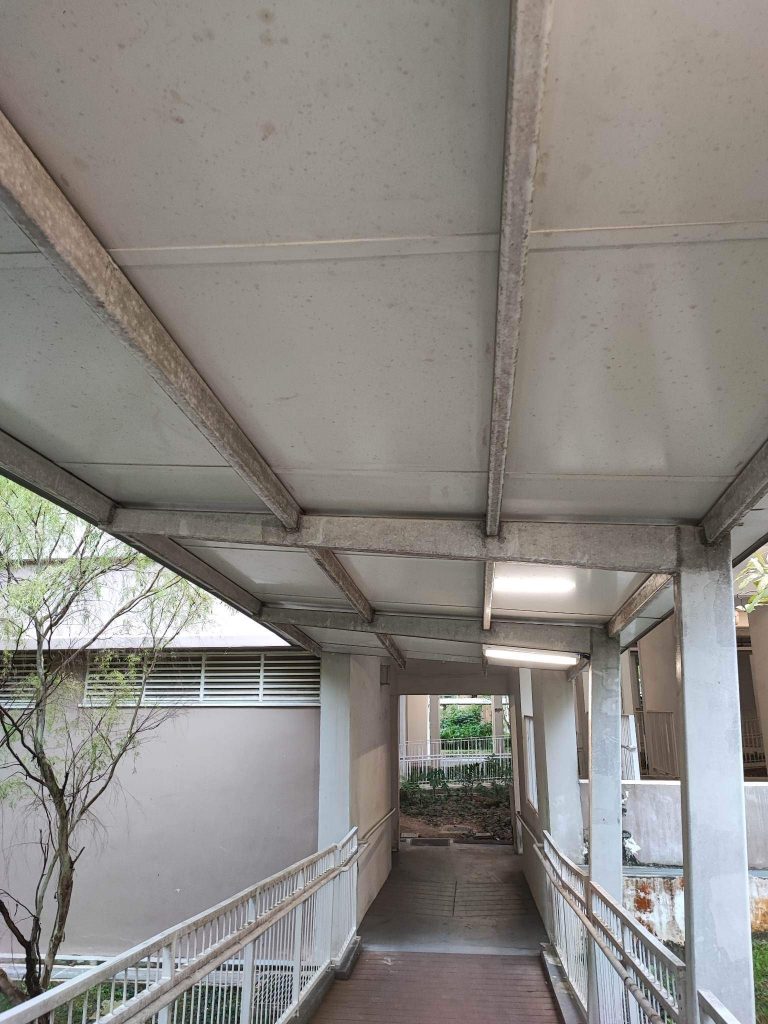
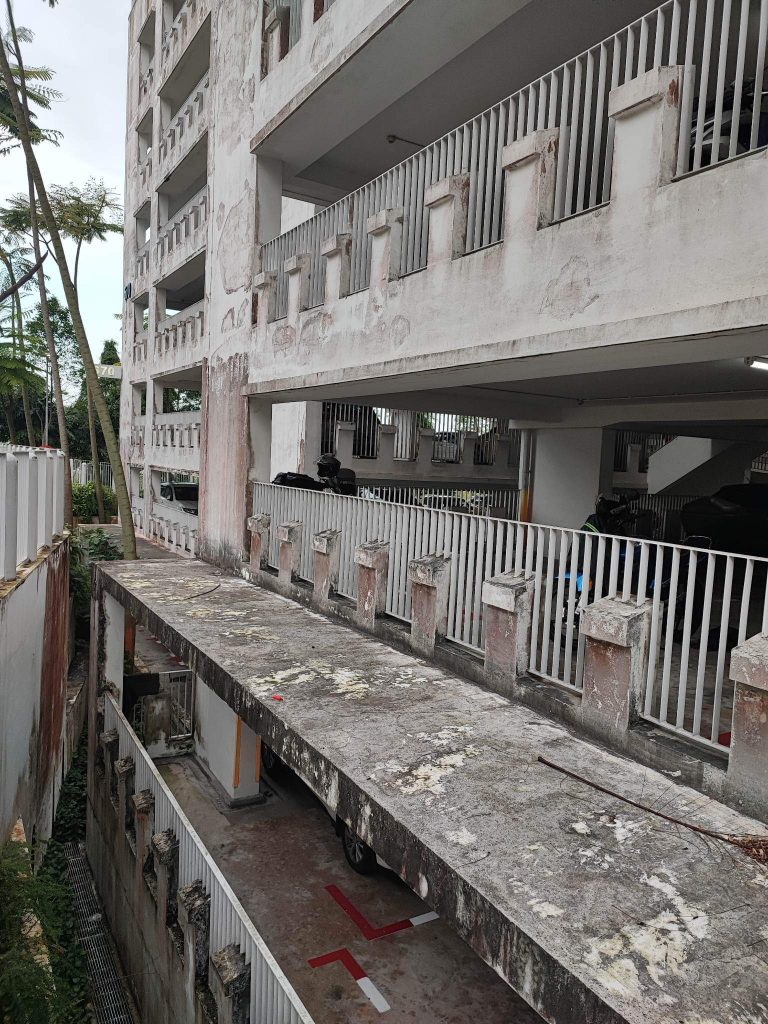
“When I saw the news recently, I was surprised that [it wasn’t just happening in] my area, but all around Sengkang and Punggol. Look, I’m not sure about other estates, but I know around Sengkang, if you take a jog or a walk along the river, you can see the damage for yourself—it’s quite terrible.”
According to the Ministry of National Development, town councils manage general Repair & Re-decoration (R&R) works, including repainting residential blocks. For multi-storey car parks, HDB manages R&R works on a seven-year cycle.
While repainting works are finally being carried out this month, James can’t help but feel disappointed at the efforts made to maintain his estate. “I like the area and the neighbourhood, but it’s a bit disappointing when you walk around it. It is so unsightly”.
The same can be said for Gregory, also in his 30s, who moved to Waterway Terraces last October. If you were hunting for houses in 2020, you’d know that Waterway Terraces was quite the hot estate, with their five-room units being 12 times oversubscribed.
Completed in 2015, this was an HDB estate that was set to rival the Pinnacle@Duxton. The project was, after all, designed by foreign architecture firm Group8asia, which went on to win an award for its innovative design.
On top of being award-winning, it’s located right next to a giant mall and an MRT station. This is where you want to be if you wanted to live in Punggol.
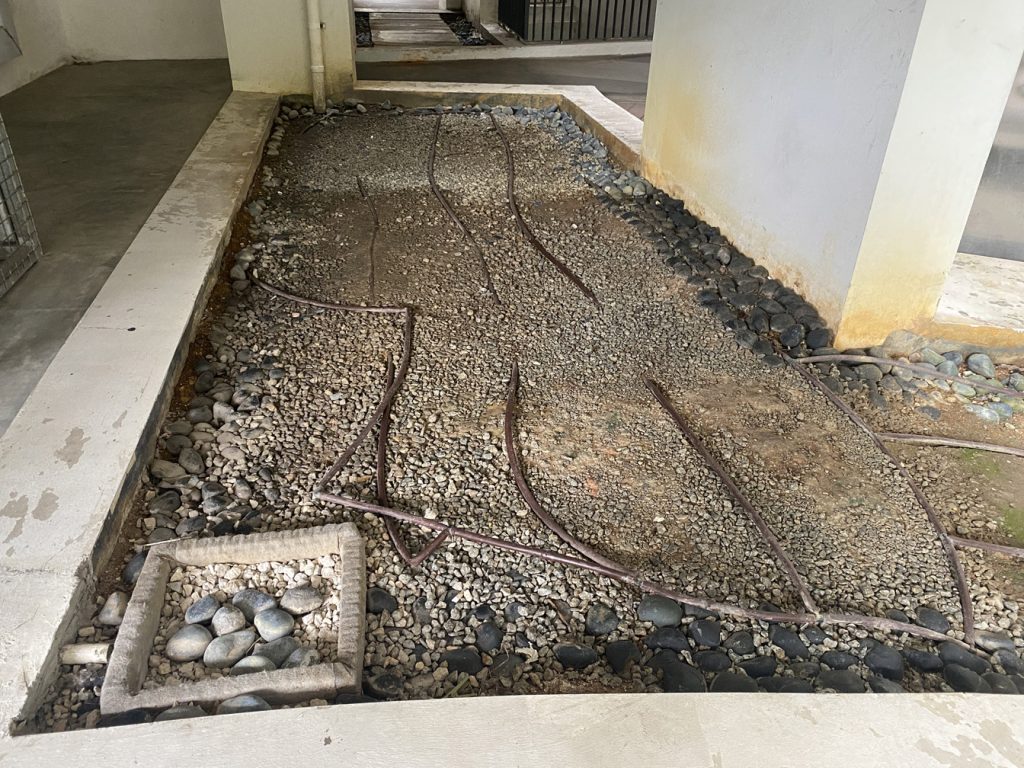
Dry Grass and Empty Patches
Gregory thought the same until he went for a viewing in April 2022. “When I first laid eyes on Waterway Terrace, I didn’t know this was an HDB estate. The whole place looked very industrial to me,” Gregory quips.
“I was in disbelief that this was a newly MOPed project because it certainly did not look it. My old HDB place looks much, much newer than this Waterway Terrace.”
RICE asked Pasir-Ris Punggol Town Council—which handles the maintenance of Waterway Ridge and Waterway Terrace—why mould seems to affect new BTO estates regardless of whether they are near a water body. We have not received a reply at the time of publishing this story.
It’s hard to disagree with Gregory, especially if you’ve paid a visit to Waterway Terrace recently.
First, the dust. One of the many unique features of the massive Waterway Terraces is how the exterior of the building slopes downwards to prevent rain from getting into the flat.
A well-intentioned idea—except if you take a cursory glance at the estate, you’ll notice the top portion of the exterior is covered with a thick layer of dirt and dust, almost like soot. The very solution to the problem of rainy days created an unsightly problem.
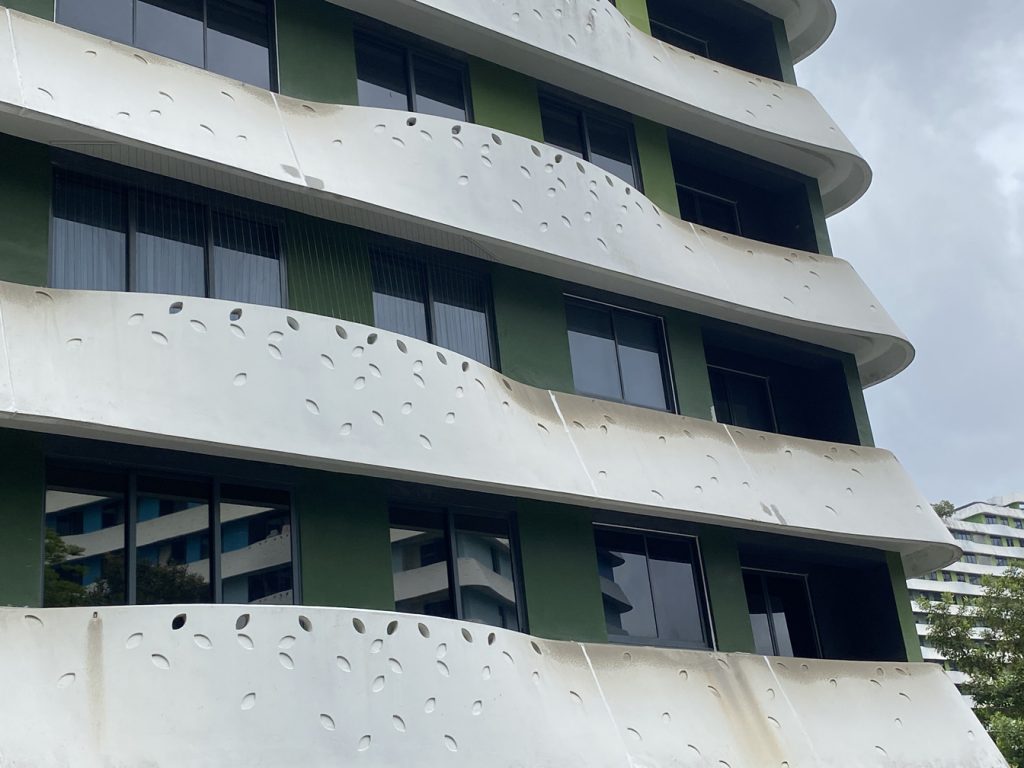
“If you have seen the car park area, there is a lot of dry grass and empty patches everywhere. It looks like a cemetery to me,” adds Gregory. “And since the long corridors are connected and illuminated by energy-saving bulbs that light up only when you walk past, it can be pretty scary and deserted.”
With all this in mind, it befuddles anyone why Gregory still chose to live at Waterway Point.
“Look, everyone wants to upgrade, right?” Gregory offers. “We wanted to move to a better environment with a nicer house. Even though my wife also agrees that the building is ugly, the location is too good to pass up.”
“Plus, all these things don’t seem to matter as much once you step inside your unit, which I spent quite a bit of money renovating,” says Gregory.
Thankfully, hope is in sight. In our most recent visit to the estate in early February, painting works were underway. Patches of spalling concrete were in the midst of being patched up and painted over.
But due to the estate’s sprawling size, repair and refurbishment works are being carried out in phases, with some parts still left untouched. This allowed us to see the true extent of the exterior degradation that Gregory was talking about—and it is not pretty.
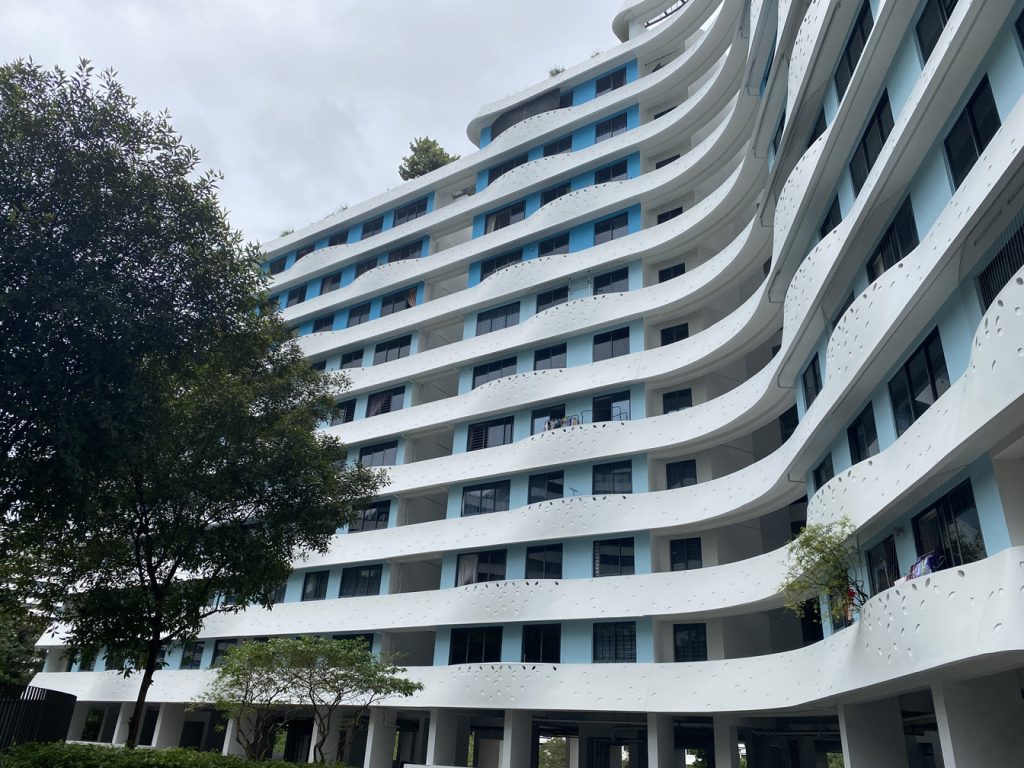
(Not) In the Mood for Mould
As much as there is wisdom in not getting too hung up on the exterior of one’s estate, looks do matter in some cases. Some might argue that Gregory and James’ HDB units are more susceptible to mould because they are near the water’s edge.
However, further investigation into the trenches of Facebook comments reveals that this is not entirely the case.
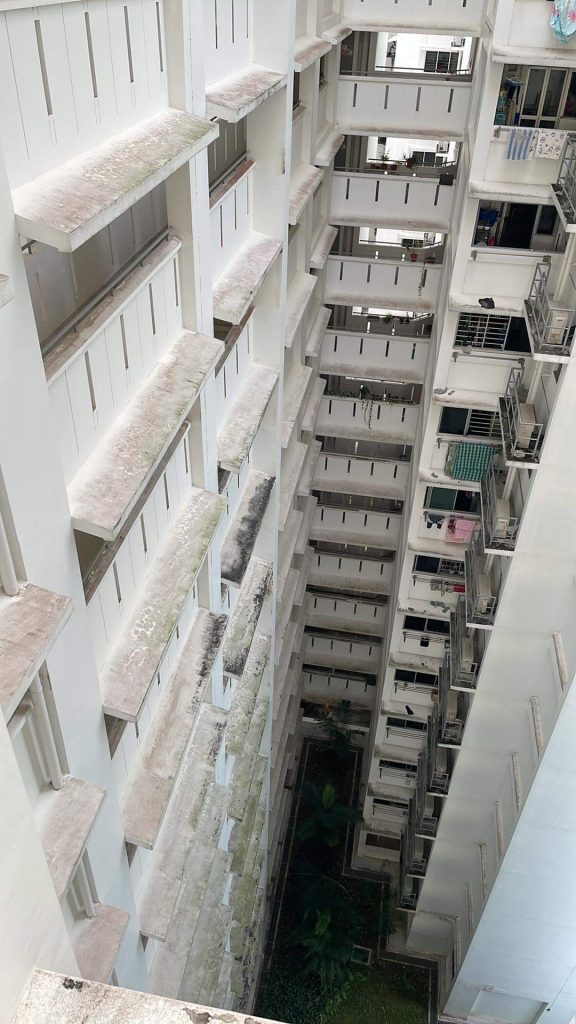
Lisa, like Gregory and James, has dealt with her fair share of mould in her Keat Hong Colours estate at Choa Chu Kang. After getting married Lisa and her husband decided to get a flat in the area, seeing as it was where Lisa grew up.
Like Waterway Ridge and Waterway Terrace, Keat Hong Colours is a reasonably young estate completed in 2017.
“This was one of the few blocks we found interesting with more open space and quieter surroundings; everything fit our criteria,” recounts Lisa.
But that was years ago. Today, Lisa can’t escape the layer of green blanketing ledges, rust-brown smearing corridor walls, and peeling walls along common walkways.
“The estate is quite badly maintained,” says Lisa. “I feel like there’s no one looking out for this block. It’s like this block, and this area doesn’t matter. No one is taking care of it.”
Choa Chu Kang Town Council, which manages R&R works for Keat Hong Colours, did not respond to our request for comments at the time of publishing.
Having grown up in Choa Chu Kang before living in Bukit Panjang and Marsiling, Lisa notes how all her previous homes were well-maintained. Keat Hong Colours is a stark contrast.
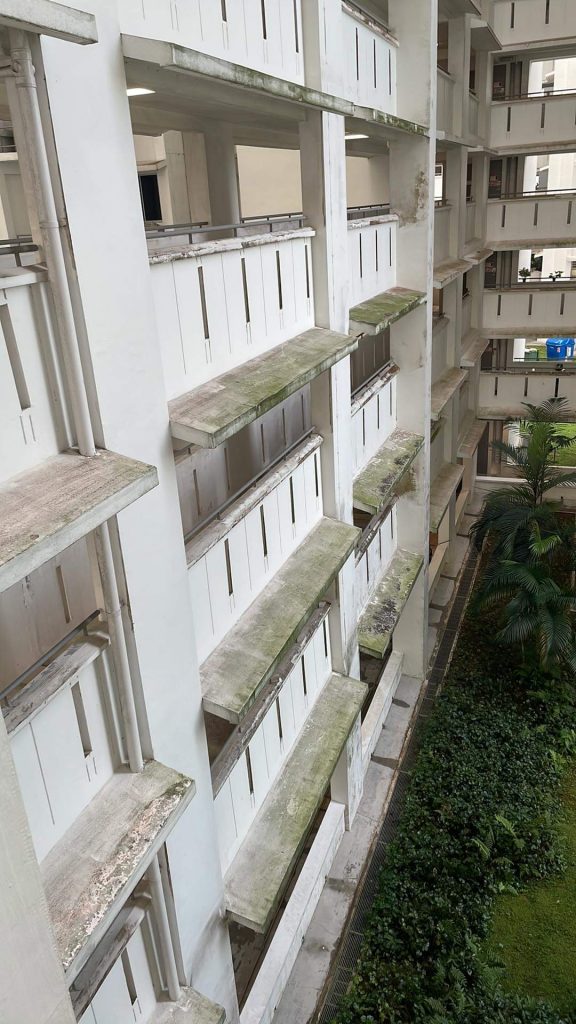
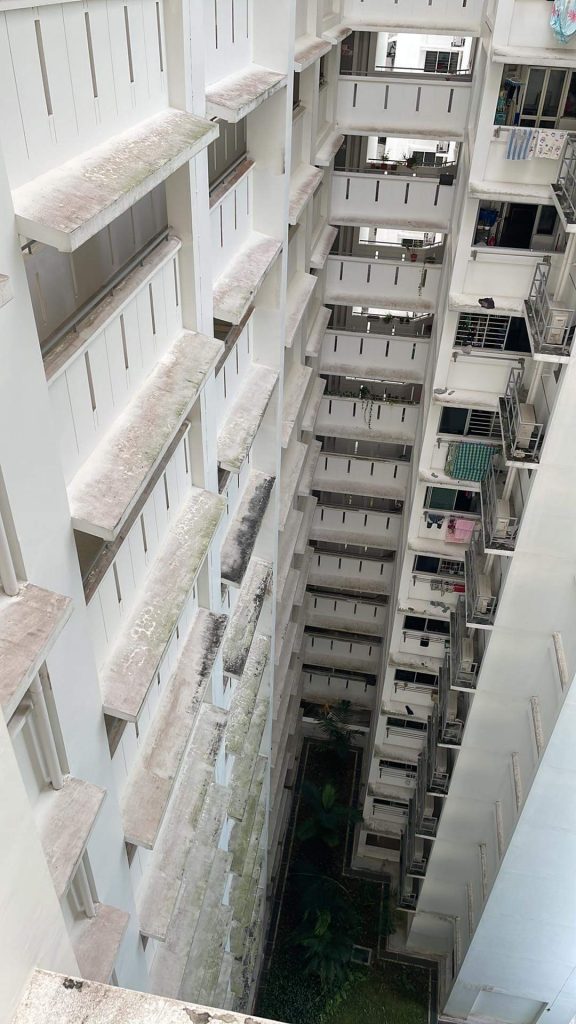
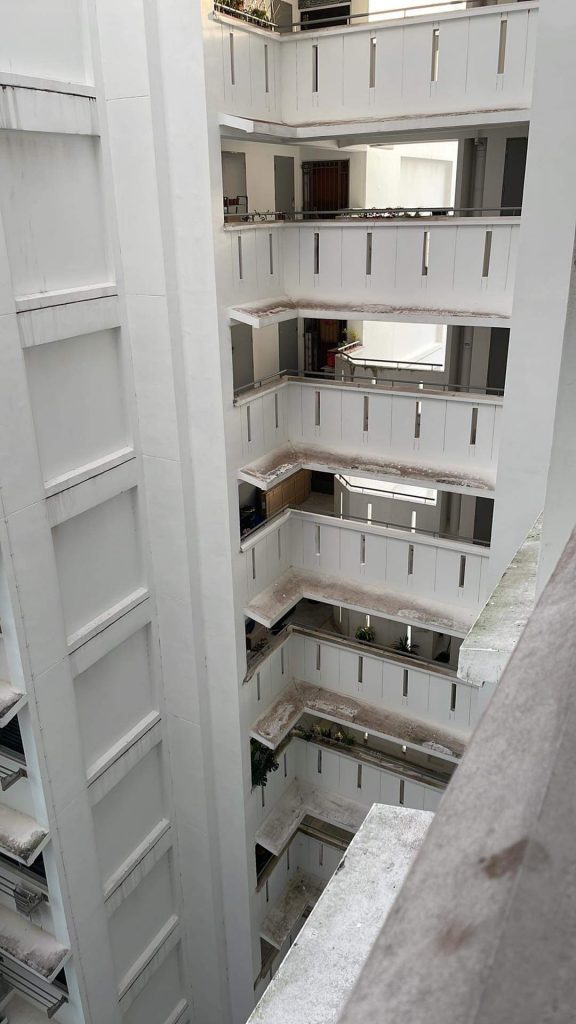
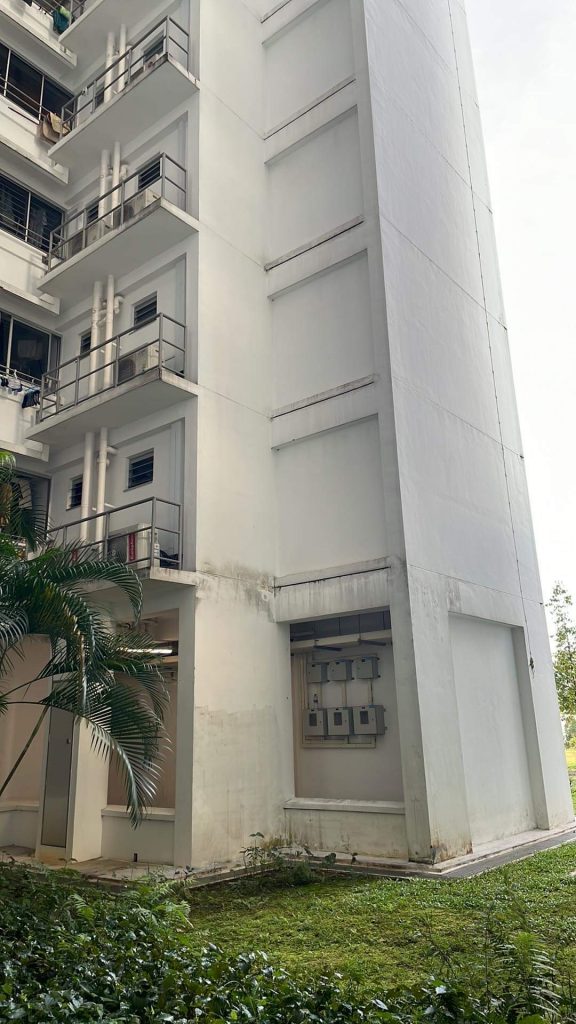
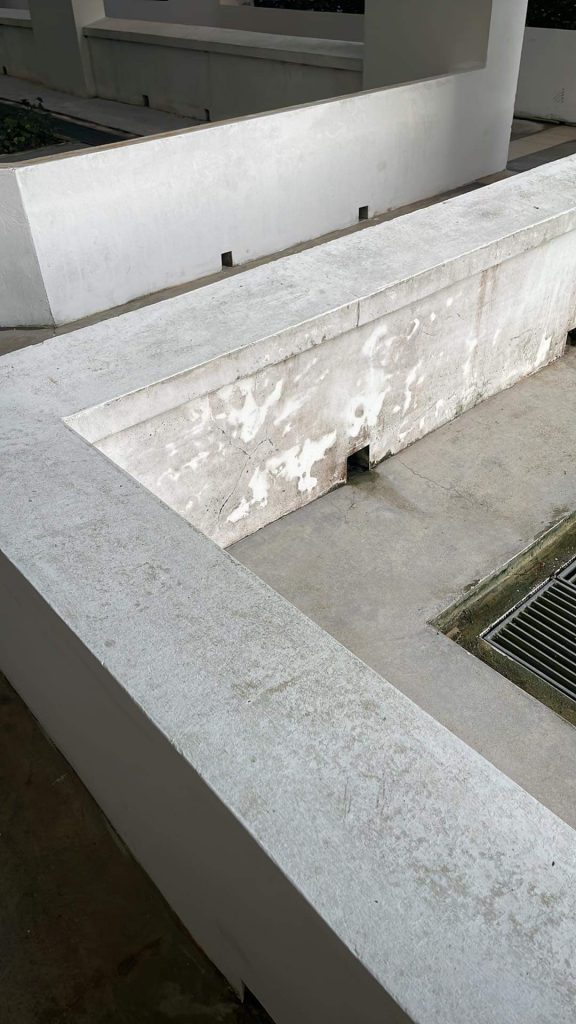
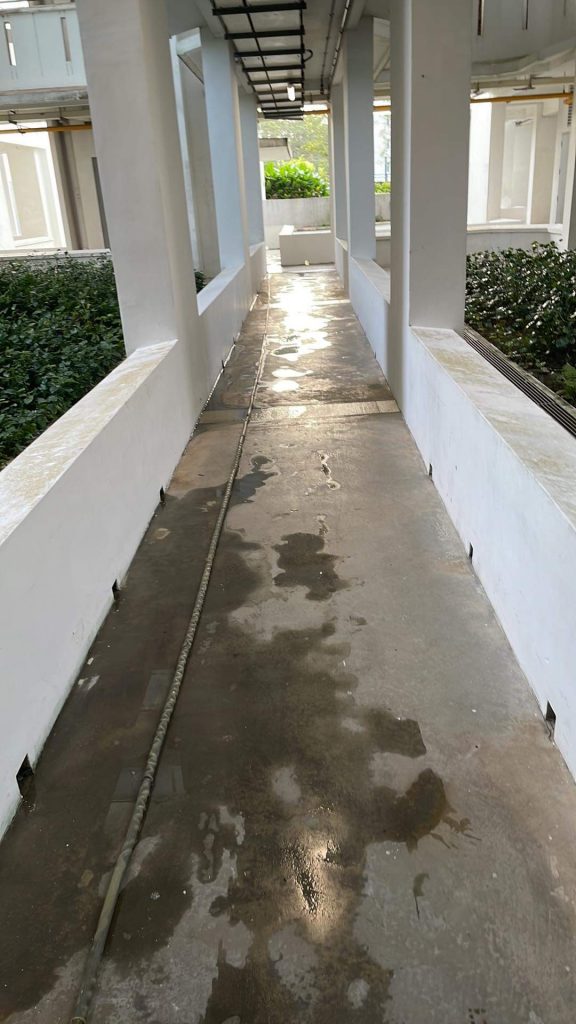
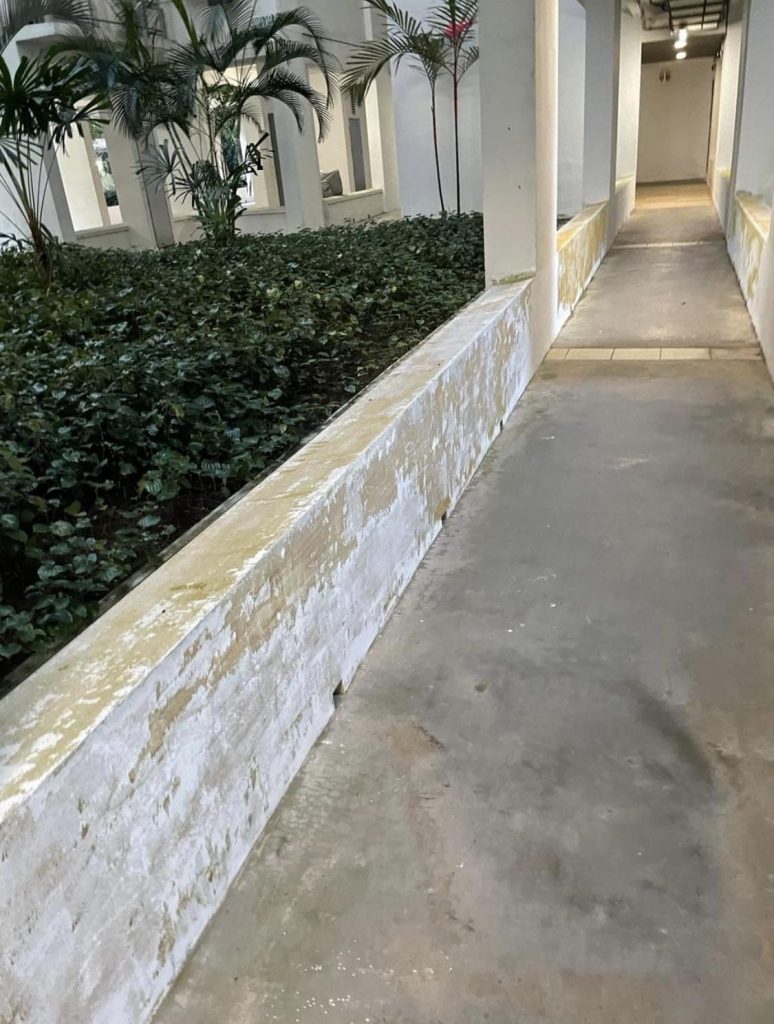
Undoubtedly, seeing your estate in such a dishevelled state does a number on your psyche.
“The place definitely affects my mood as well,” relates Lisa. “After being packed like sardines on the bus and MRT and feeling very tired from work, you go home and see the block; it’s not really motivating. You paid huge sums for it, but you get this.”
James concurs; it’s hard to feel proud of your own home when it gets all the wrong attention. “During Chinese New Year, I had friends who visited me, and they all said, ‘What happened to your estate?’” James sighs.
“They didn’t think there would be mould in this area. All I can say is that the mould affects the whole of Punggol and Sengkang. There’s nothing I can do. If I complain, they say that cyclic works are coming up.”
James even considered reaching out to his MP. But as the notice for R&R has just been posted, James decided to wait and see.
Murky Town Council Affairs
When incidents like these crop up, naturally, the issue of responsibility follows closely behind. Maintenance issues come solely under the responsibility of respective town councils.
Understandably, there are intricacies behind the operations and decisions of each town council. But Gregory cannot help but feel a little disgruntled at how his town council has handled the estate so far.
“We pay conservancy charges, and we pay for maintenance. I’m sure when this project first launched, it was marketed very well to people, touting the greenery and exciting new playground. But as great as it is, no one is currently using them because they are dirty and not well-maintained,” says Gregory.
“My MP has weekly meet-the-people sessions here in my block. I don’t know how she can do it here because it’s so dirty,” adds Gregory. Considering that every resident pays town council fees and upkeep of the estate, Gregory is left wondering how the funds are utilised.
“Surely, somebody is doing their job, but they’re not doing it well enough. Somebody is maintaining the building because the residents are paying for it. But are they just taking the money and then not doing anything? Or is it a rule that we can only paint the building every five or seven years? Then what goes on between the first to fifth year?”
We reached out to Pasir Ris-Punggol and Choa Chu Kang Town council to ask what are the Town Councils’ plans in preventing the mould from recurring but have yet to receive a response at the time of publishing.
When faced with the same issue of mouldy ledges and walls, Lisa refused to sit on it. She reached out to her town council with some success.
She has made two complaints so far—one in for the mould outside her house and another for the mould around her block. While the town council has rectified those areas as requested, the process left her feeling frustrated and alone.
“I feel like I’m the only one out of so many households in this estate voicing my opinion. Sometimes, I don’t think my voice is being heard,” explains Lisa.
She went on to share that the unsightly walls are an eyesore that hinders neighbourly bonding because everyone would rather retreat into their homes than hang around the corridor.
“It doesn’t matter who complains. As neighbours, I think we should have a nice environment so we can actually get together. If the surroundings are filthy, how will we stay outside to chat or get to know one another?”
“I don’t sit at the void deck and enjoy the scenery because there’s nothing for me to enjoy,” chimes Gregory. “Even when my friends visit me and want to sit down at the void deck to enjoy the breeze, all they see are dead plants.”
The less-than-ideal surroundings of Waterway Terrace do irk Gregory, but he is comforted by how much he has invested in his home renovation, where he can shut out the world outside.
“When I step through my doors, this is my place, my home. It looks so much nicer than outside. When I open my doors, it is a totally new world.”
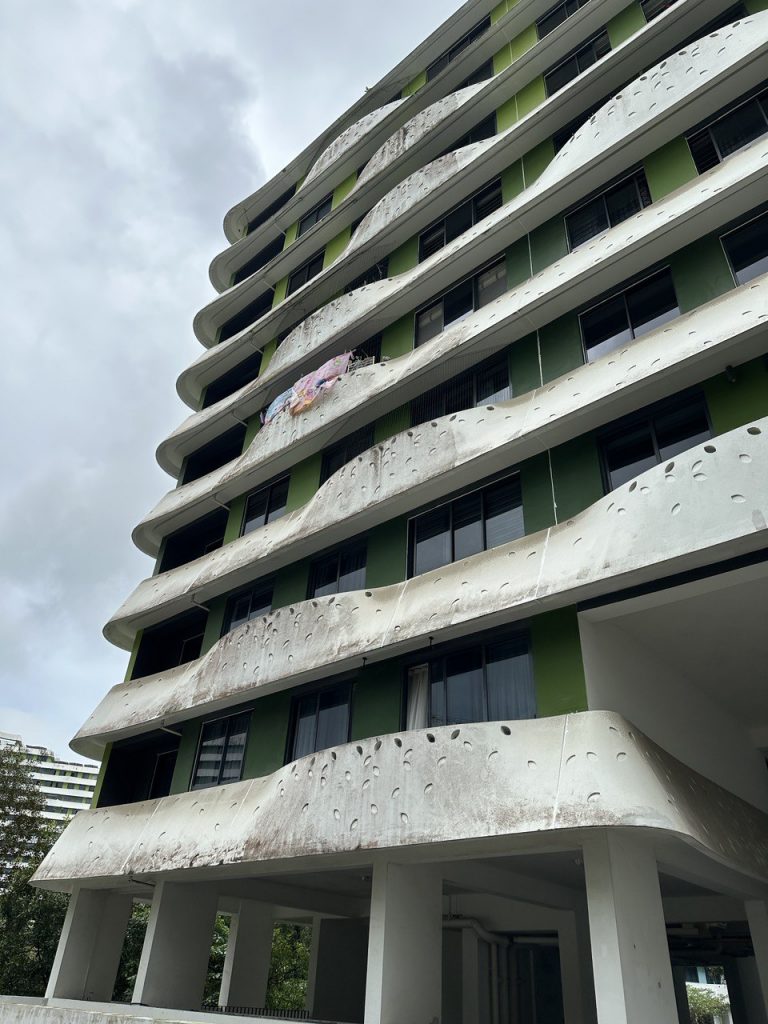
Still a Forever Home?
When your estate looks like a case of brutalism gone wrong or, as many pointed out, an Amber Court replica in the making, it dampens those forever home plans quite a bit.
For those not in the know, the Amber Court Villa D’Genting Resort is an apartment complex in Genting Highlands, Pahang, Malaysia, that achieved peak notoriety for looking like it has been abandoned. Some would even say that it looks haunted.
“I have thought of living here forever,” says Lisa, “I wouldn’t want to change houses, especially with all the hassle involved. But now, I’m considering it.”
The mould, Lisa theorises, behaves like any Jack Neo movie—there’s bound to be a sequel. When the town council cleared the mould after Lisa’s complaint, it returned within a year.
“I’m not sure whether there is any other alternative besides painting over it,” says Lisa. “I’m not sure what paint they are using to prevent mould from recurring—after the first time they painted over the mould, it happened again.”
Lisa is not the only one with little faith that the mould would stay away. James is confident that mould will return despite his town council’s efforts, as he lives close to the river and the coast.
Still, he hopes for just a level of regular maintenance that can make Punggol much more enjoyable. After all, with so many amenities close to him, James doesn’t want to live anywhere else.
HDB Seems Equally Befuddled
Judging by the responses HDB gave in response to ‘Mould-gate’, even they are unsure what might be causing the rapid growth of mould on the facades of newly-built BTO flats.
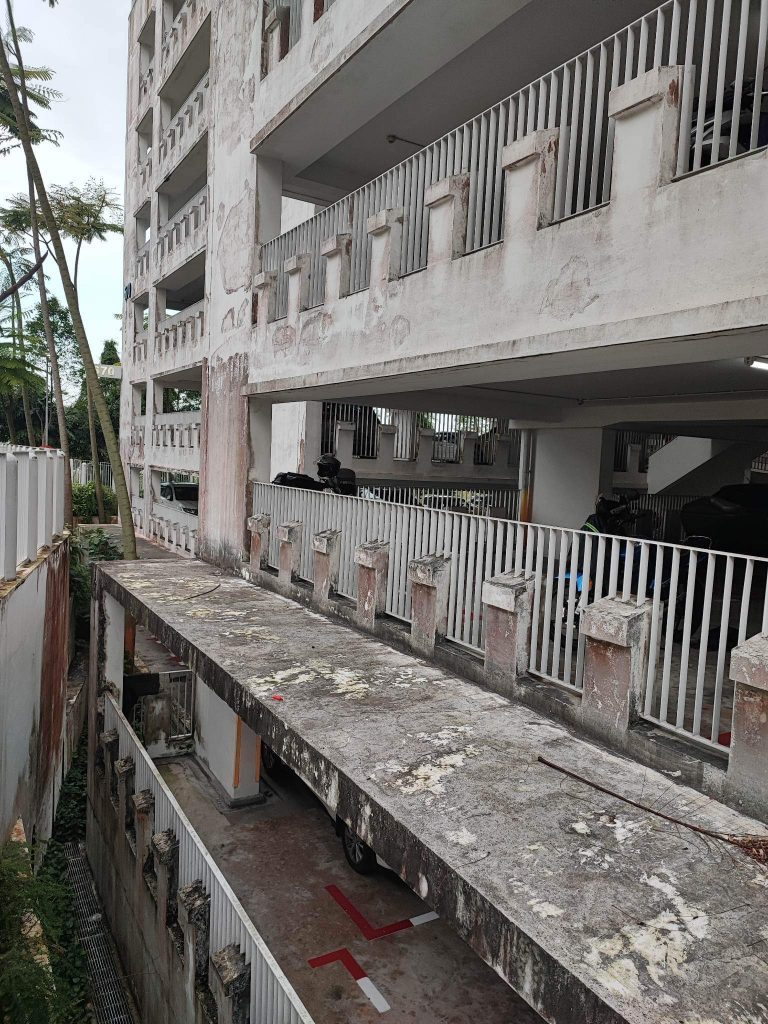
HDB has said that the external walls of all new HDB developments are painted with algae-resistant paint, and the external painting comes with a warranty of six years.
HDB also mentions that there is a six-year warranty for external painting when the blocks are handed over to the town councils for management and maintenance. This warranty covers defects and imperfections such as paint peeling, discolouration, and algae growth.
“During this period, the building contractor and their paint specialist are required to rectify any defects or imperfections detected,” HDB added.
In Parliament earlier this month, National Development Minister Desmond Lee shared that HDB will commission an independent professional technical study to look into mould growth observed at Anchorvale Parkview in Sengkang and Matilda Court in Sumang Lane in Punggol.
The study, which is expected to take three to four months, will look at why some blocks are more prone to mould, what can be done to fix the situation and how to prevent a recurrence.
“Nonetheless,” Minister Lee emphasises, “HDB has assessed that the mould growth observed in affected blocks does not affect structural components and poses no risks to the structural integrity of the building.”
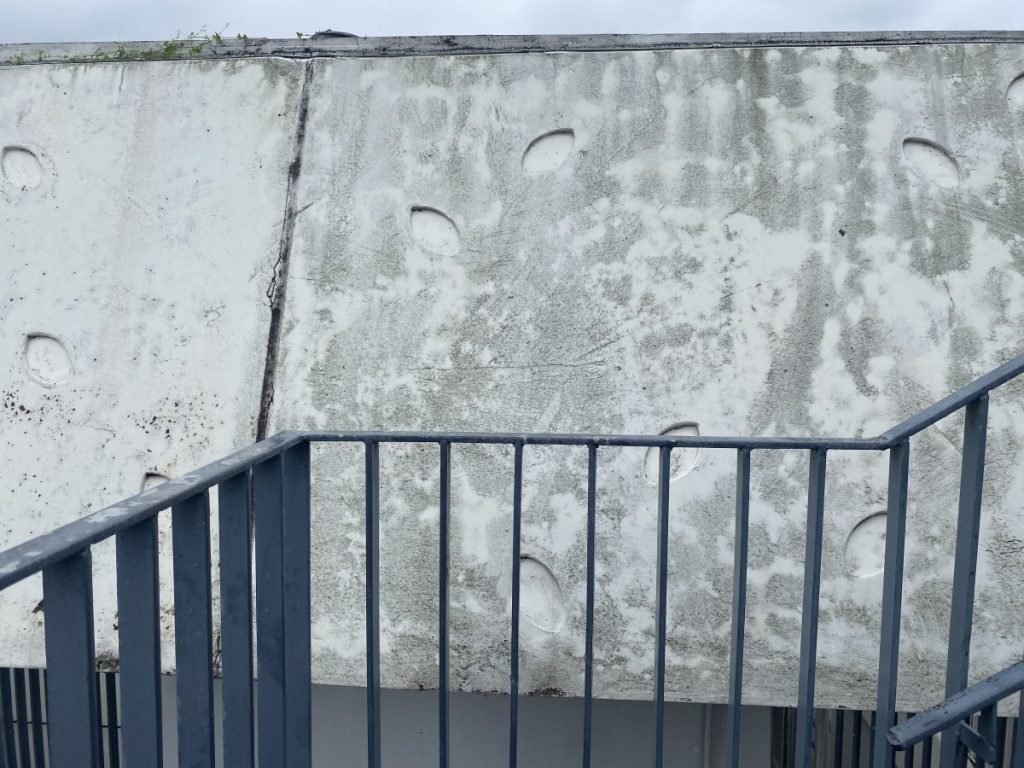
“I just hope there can be more effort by the Town Council. We can understand there might be some manpower issues during the Covid-19 period. Now that we are in a post Covid-19 time, I think the town council can manage the bare minimum.”
Like James, Gregory agrees that despite the mouldy walls and dead plants, the location is too good to give up. “I probably wouldn’t move again because this is the nearest HDB estate to Waterway Point. The other ones are all private properties.”
At this point, all Gregory hopes is that the town council can do something to spruce up the greenery at Waterway Terraces and beef up the regular maintenance.
“If they do, right, maybe when my friends or relatives come over, they will have something else to talk about other than the surroundings.”




